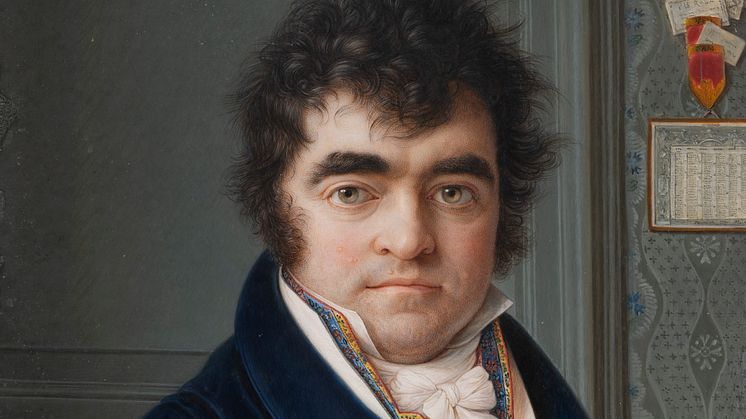
Press release -
New book about Nationalmuseum’s miniature paintings – a world-class collection
Nationalmuseum is publishing a new book about its collection of miniature paintings. The book’s author, Magnus Olausson, has been working with this collection for more than 30 years. This is the first comprehensive survey in Swedish of miniature painting as an art form, but also the first complete presentation in English of the museum’s collection.
Nationalmuseum has the world’s biggest collection of miniature paintings, comprising 5,700 works, mainly portraits, by Swedish and European artists from the 16th to the mid 20th century. What makes this collection noteworthy is not only its volume, but also its depth and breadth. A lavishly illustrated book now being published in Swedish and English is intended to be a comprehensive survey of the history of miniature painting, featuring examples from Nationalmuseum. The book traces the development of miniature painting over five centuries from exclusive art form to the preserve of ordinary people.
Magnus Olausson, now director of collections at Nationalmuseum, was tasked in 1988 with cataloguing the 4,000-plus miniature paintings in the museum’s collection bequeathed by Carl Fredrik Dahlgren, a 19th-century judge and art collector. This proved to be an exciting journey of discovery, explaining many mysteries and revealing hidden treasures. In parallel with the cataloguing work, Nationalmuseum embarked on extensive efforts to supplement its miniatures collection with newly acquired works by important but previously unrepresented artists. In all, over 450 miniatures have been added to the collection over the years, radically changing its composition and making it much more representative. The foundation for these acquisitions was laid by Hjalmar and Carl August Wicander’s endowment of a dedicated fund for the acquisition and conservation of miniatures. Hjalmar Wicander also donated several exclusive miniatures to Nationalmuseum, which are now part of the collection.
Individual works and artists are featured in the book, with some artistic directions covered in more detail than others. The same applies to certain countries that have achieved particular prominence in the miniature painting field. Readers can also learn about the artist–client relationship, the use and function of miniatures, manuals, collections and historical accounts. There is a special section devoted to materials and techniques, written by Cecilia Rönnerstam, miniature paintings conservator at Nationalmuseum.
The book, titled Miniature Paintings in Nationalmuseum. A World-Class Collection, is on sale in the Nationalmuseum gift shop and online shop. Many of the pieces mentioned in the book are among the 1,000 miniature portraits on show in Nationalmuseum’s Treasury.
Media enquiries
Hanna Tottmar, head of press, press@nationalmuseum.se, + 46 8 5195 4400
Categories
Nationalmuseum is Sweden’s museum of art and design. The collections comprise some 700 000 objects, including paintings, sculpture, drawings and graphic art from the 16th century up to the beginning of the 20th century and the collection of applied art and design up to the present day. Nationalmuseum’s responsibility is to preserve and make art accessible and provide knowledge.

